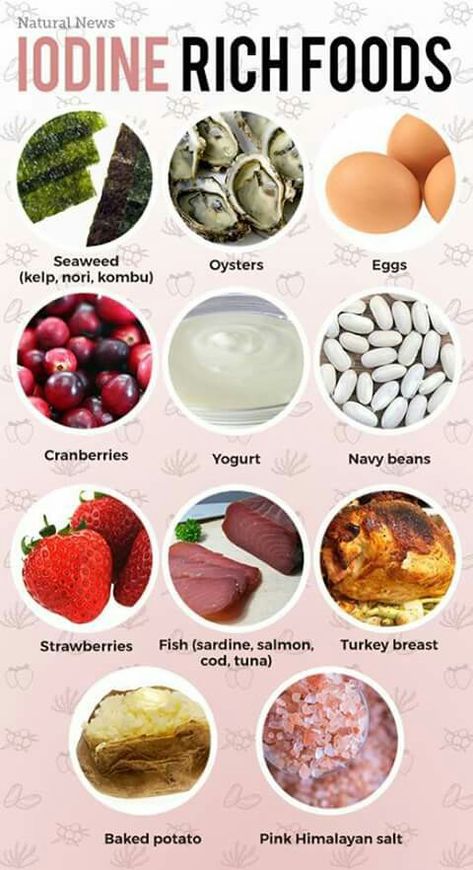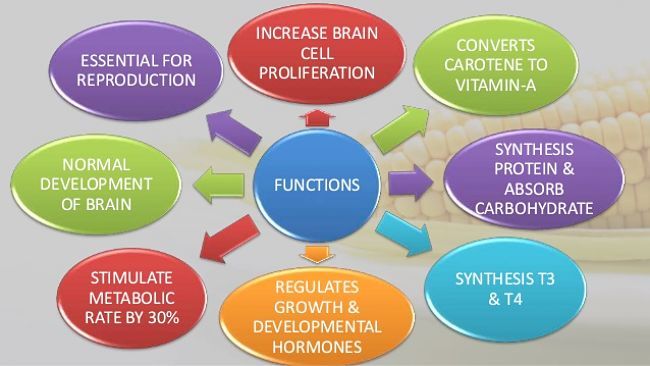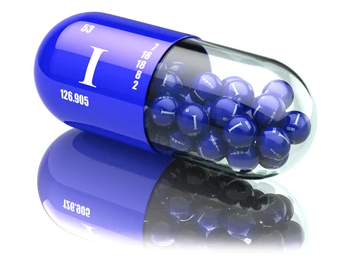
Iodide (I) is a non-metal responsible for many roles to include thyroid hormone synthesis; a substance influencing several physiological processes to include stimulation of oxygen consumption, body heat production, nervous system development, and maintenance of basal metabolism (Gropper, Smith, & Carr, 2018; Weng, Liu, Ye, Pan, & Xia, 2014). Thus, adequate consumption I is essential in maintaining said processes. As such, the following will consider sources of I and Recommended Dietary Allowances (RDAs).

As was discussed previously, I is involved in a myriad of physiological processes. Thus, inadequate consumption, absorption, and usage of said micronutrient can cause aberrations in such processes. One manifestation of deficiency is Goiter; an iodide deficiency disorder (IDD) manifested from blood levels below 150 mcg/day for adults (Weng et al., 2014). As such, one intervention is to ensure adequate daily consumption of I from sources rich in said micronutrient. Gropper et al. (2018) indicated that although I can be found in many foods, relative concentrations are quite variable due to levels of I found in the soil and the interactions with fertilizers. Ultimately, it is the soil concentration, not the food, that determines the level of nutrient density of crops.

Despite a lack of consistency in I concentration in fruits and vegetables, seafood does not suffer a similar fate; Gropper et al. (2018) indicated that salt-water fish contain higher levels of I (30-300 mcg/100 g) providing 50-100% of the daily requirement of said micronutrient. However, freshwater fish provided nominal amounts of I; 2-4 mcg/100 g. Salt has also been fortified with I, especially in North America; ¼ tsp of fortified salt can provide approximately 50% of the RDA of I. I is also provided in multivitamins in amounts near the RDA of 150 mcg. However, Gropper et al. (2018) indicated that most supplements use kelp as the source; kelp, like fruits and vegetables, tend to have variable levels of I making its use inconsistent.

If symptoms of deficiency persist after including foods rich in said micronutrient, supplementation might be indicated. However, caution should be taken while doing so; signs of acute I toxicity include fever, diarrhea, vomiting, nausea, and burning of the stomach and mouth (Gropper et al., 2018). Therefore, it is imperative to be mindful of the tolerable upper intake (TUI) of I which is 1,100 mcg/day. Exceeding said TUI can result in possible inflammation of the thyroid in addition to inducing hyper/hypothyroidism (Gropper et al., 2018).
In conclusion, I is responsible for many roles to include thyroid hormone synthesis; a substance influencing several physiological processes to include stimulation of oxygen consumption, body heat production, nervous system development, and maintenance of basal metabolism. As such, like all other micronutrients, it is imperative to be mindful of sources rich in such a nutrient, in addition to the portions of food required to reach optimal levels in the body. Finally, one must also be mindful that I in food can fluctuate from one region to the other, necessitating the need to monitor signs and symptoms of IDDs before they worsen.
References
Gropper, S. S., Smith, J. L., & Carr, T. P. (2018). Advanced nutrition and human metabolism (7thed.). Boston, MA: Cengage Learning.
Weng, H. X, Liu, H. P, Ye, M., Pan, L., & Xia, T. H. (2014). An innovative approach for iodine supplementation using iodine-rich phytogenic food. Environmental Geochemistry and Health, 36(4), 815-828.
-Michael McIsaac
